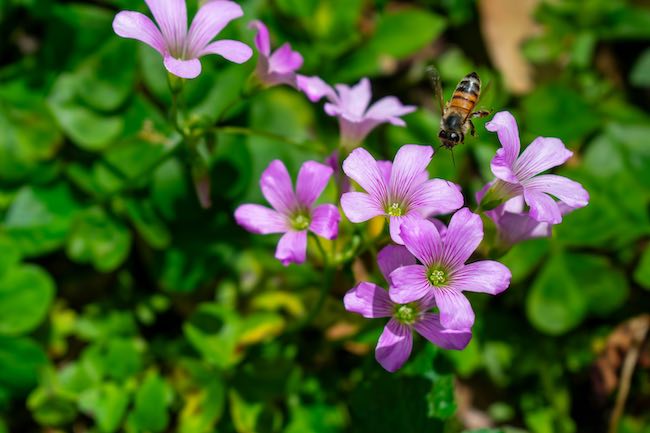Versatile Plants: A Guide to Low-Maintenance Landscape Design for Busy Homeowners

You want a beautiful yard but don’t have time to maintain it. Busy homeowners across America face the same challenge.
However, creating a beautiful and low-maintenance landscape is possible with the right plant selections, design strategies, and team of landscaping experts.
By choosing versatile, low-maintenance plants and implementing smart design principles, you can enjoy a stunning outdoor space without sacrificing precious time and energy.
Here are some tips and tricks to help you create the perfect garden for your lifestyle.
1. Native Plants
Native plants are adapted to local soil and climate conditions, which makes them a resilient and low-maintenance addition to your garden.
They require very little watering, fertilizing, and pest control. They not only save you time, effort, and money but also look great in your yard. Native species also support local wildlife and promote biodiversity in your landscape.
Consider incorporating things like perennials, shrubs, and trees that thrive in your region.
2. Drought-Tolerant
Water conservation is a growing concern in many areas, and is often a scarcity, but this doesn’t mean you can’t have a nice yard. Drought-tolerant plants offer a sustainable solution to this problem.
These plants have adapted to survive with minimal water, and are therefore the ideal candidates to spruce up low-maintenance landscapes.
Succulents, such as sedum and sempervivum, are excellent choices for rock gardens or groundcovers, while drought-resistant shrubs like lavender and Russian sage add vibrant colors and textures. Sustainable doesn’t have to mean boring.
3. Groundcovers
Groundcovers are versatile plants that can replace traditional grass, reducing the need for mowing and minimizing maintenance.
Creeping perennials like Vinca, ajuga, and Pachysandra form dense mats that suppress weeds and retain moisture, creating a lush and low-maintenance carpet. They are also great for stabilizing slopes and preventing soil erosion.
4. Mulch
Mulching is a super simple way to reduce maintenance in your landscape. A 2-4 inch layer of organic mulch, such as bark chips or shredded leaves, helps retain soil moisture, suppress weed growth, and insulate plant roots.
As a bonus, as the mulch breaks down, it provides valuable nutrients to the soil. This allows for the promotion of plant health while simultaneously reducing the need for frequent fertilization. In the winter months, after the leaves have fallen off the trees, creating your own mulch is also a great way to get rid of the fallen leaves.
5. Evergreens
The name says it all! Evergreen plants, such as conifers, hollies, and rhododendrons, keep your yard looking beautiful and green all year round.
Unlike other plants that shed their leaves annually, evergreens maintain their foliage, reducing the need for raking and cleanup.
Choose low-maintenance varieties suited to your climate and soil conditions for a hassle-free and visually appealing landscape.
6. Embrace Hardscaping
Hardscaping elements, such as patios, walkways, and retaining walls, can significantly reduce the area requiring regular maintenance.
These features not only enhance the aesthetic appeal of your landscape but they also create defined spaces for outdoor living and entertainment.
Incorporating low-maintenance materials like pavers, gravel, or decorative rock will help to minimize weed growth and simplify upkeep.
7. Pruning
Proper pruning is essential for maintaining the health and appearance of your plants while minimizing excessive growth and maintenance requirements.
Prune shrubs and trees at the appropriate times to encourage healthy growth habits and prevent overgrowth. Consider low-maintenance varieties that require minimal pruning, such as dwarf cultivars or naturally compact species.
8. Efficient Irrigation
An efficient irrigation system is worth the investment. It can significantly reduce the time, effort, and cost required for watering your landscape.
Consider installing a drip irrigation system or soaker hoses, which deliver water directly to the root zone, minimizing water waste and reducing the need for frequent manual watering.
Incorporating things like rain barrels or other water-harvesting techniques is a thrifty way to further reduce, not only, your reliance on municipal water sources but also the cost of irrigation and watering.
By incorporating these low-maintenance design principles and selecting versatile plants, you can create a beautiful and sustainable landscape that complements your busy lifestyle. With a well-planned and low-maintenance landscape, you can enjoy the outdoors without sacrificing precious time and energy on tedious yard work. It’s a win-win situation.


